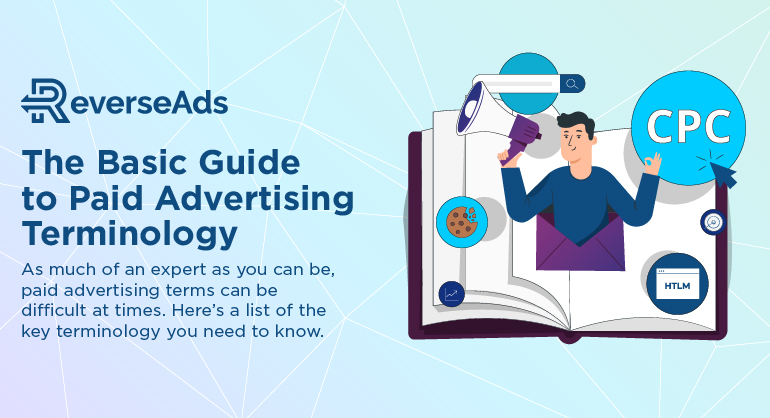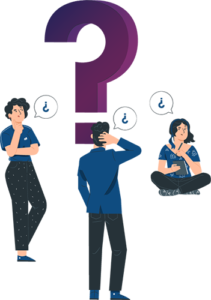The Basic Guide to Paid Advertising Terminology

Pay Per Click (PPC) Advertising is one of the most effective ways to increase web traffic and leads. As much of an expert as you can be, paid advertising terms can be difficult and overwhelming at times. Here you can find the key terminology to PPC Advertising, to help you navigate your way through the digital advertising industry.

Bid Adjustment: A percentage increase or decrease in your bids. A bid adjustment allows you to show your ads more or less frequently based on where, when, and how people search. You can also adjust your bids based on how your ads perform, helping to improve your return on investment (ROI).
Bounce Rate: Percentage of people who enter your site but leave without visiting any other page. On average, bounce rates are pretty high among all online industries: a good bounce rate is considered between 40 to 55%, anything below 40% is considered excellent.
Click Fraud: Click fraud is a type of fraud that occurs in pay-per-click (PPC) online advertising. As website owners are paid based on the clicks they get on the ads posted, click fraud is a black-hat technique of falsely inflating the number of clicks on a pay-per-click ad. Click fraud happens either because advertisers are trying to sabotage their competition by meeting click goals in a short period of time, or ad publishers are clicking on the ads posted on their own websites to generate more revenues for themselves
Click-Through-Rate (CTR): determined by dividing the number of users who clicked on your ad by the number of impressions generated, CTR is a way of measuring the success of an online advertising campaign. A high CTR is a positive indicator, highlighting that you have targeted the right audience and that your offer was compelling enough for a large audience to click on your ad.
Conversion Advertising (C-Advertising): C-Advertising is an innovative approach to digital advertising that prioritizes conversion goals by implementing user-friendly, proven designs for your landing pages and banner ads.
Conversion Rate: A conversion happens when a user interacts with your landing page or ad by clicking on it and undertaking an action that is valuable for your company, such as an online purchase, a subscription or a call to your business. Your conversion rate is defined as the number of visitors to a website that complete a desired action out of the total number of visitors.
Cookie: A cookie is a small file saved on people’s computers to help store preferences and other information regarding previous search history. Engines use these to track conversions and build audiences for remarketing lists. As opposed to Google, Facebook and Amazon, ReverseAds uses cookieless tracking to safeguard user privacy.
Cost-Per-Acquisition (CPA): Also referred to as Cost-Per-Lead (CPL), this refers to the amount of money an advertiser pays search engines and other internet publishers for a lead generated on their ad.
Cost-Per-Click (CPC): CPC is the amount of money an advertiser pays search engines and other internet publishers for a single click on its ad that brings one visitor to their website.
Cost-Per-Thousand (CPM): term used to denote the price of 1,000 advertisement impressions on one web page. This option is only available on the display network.
Dynamic Ad: banner ad that automatically changes in order to adapt content and promotions specifically to each user, ensuring that each user is exposed to the most effective creative. ReverseAds uses dynamic ads to serve ads to high-intent buyers along their path to purchase and make sure there is the highest probability of conversion.
Impression: An impression occurs when an ad or any other form of digital media renders on a user’s screen. Impressions are not action-based and are merely defined by a user potentially seeing the ad. They are a valid indicator in brand awareness campaigns that aim to reach the largest audience possible without necessarily converting users into buyers.
Landing Page: A standalone web page that potential customers can “land” on when they click through from an email, ad, or other digital location. Landing pages are specific marketing tools that can be effectively designed to drive more traffic and increase conversion rates. To learn more about how to design highly converting landing pages and banner ads, get in touch with one of our Marketing Experts.
Long-Tail Keyword: Long-tail keywords are longer and more specific keyword phrases that visitors are more likely to use when they’re closer to finalizing their purchase, or when they’re using voice search. Using long-tail keywords can help with SEO, as they are more specific and can target higher-intent buyers.
Marketing Qualified Lead (MQL): A lead who has indicated interest in what a brand has to offer based on marketing efforts, or is otherwise more likely to become a customer than other leads.
Quality Score: an estimate of the quality and relevance of both your keywords, ads and landing pages. Quality score is influenced by many factors such as ad relevance, landing page experience and CTR. Higher quality ads can lead to lower prices and better ad positioning. With the Google Page Experience Update set for May 2021, user experience and accessibility of your landing pages and website will contribute to higher quality scores and significantly influence ranking.
Remarketing: also known as retargeting, remarketing is the tactic of serving targeted ads to people who have already visited or taken action on your website. Display advertising is proven to be one of the most effective ways to successfully retarget customers, by serving them targeted ads along their path to purchase.
Return On Advertising Spend (ROAS): ROAS is a marketing metric that measures the efficacy of a digital advertising campaign. It is a fundamental metric to assess the performance of online marketing campaigns, and evaluate how to improve future advertising efforts.
Search Engine Marketing (SEM): SEM refers to the set of tools, techniques and strategies that help optimize the visibility of websites and web pages through search engines.
Search Engine Optimization (SEO): the practice of increasing the quantity and quality of traffic to your website through organic search engine results.
Smart Bidding: A subset of automated bid strategies that optimize for conversions or conversion value. Smart Bidding uses machine learning to optimize your bids to maximize conversions across your campaign or bidding portfolio.
Static Ad: Static ads are plain and simple ads that don’t change. You may choose to include static ads in your strategy in the initial stages of business, to create and promote brand awareness, and reach a large audience anywhere on the web.
Tracking Code: a small snippet of code that is usually implemented as JavaScript in the HTML source code of a website. These lines of code allow advertisers, webmasters, and marketers to analyze the flow of visitors to websites and the activities of users.
View-through Conversion: View-through conversions occur after an ad impression, if the user doesn’t interact with the ad, but then converts later.
These terms provide you with the basics to understand paid advertising and how you can assess the success of your campaigns. For more information and terminology, you can get in touch with one of our marketing experts and get deeper insights about the digital advertising industry.





